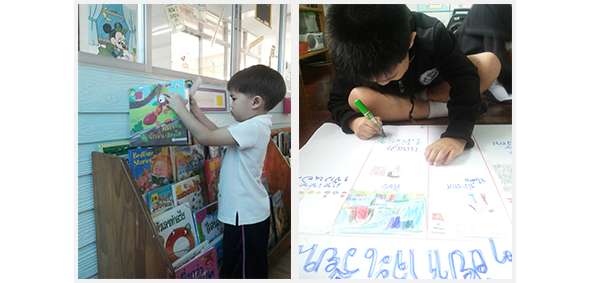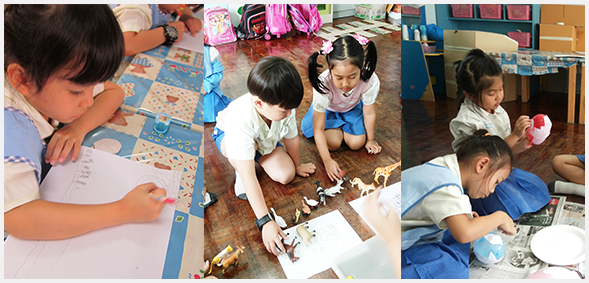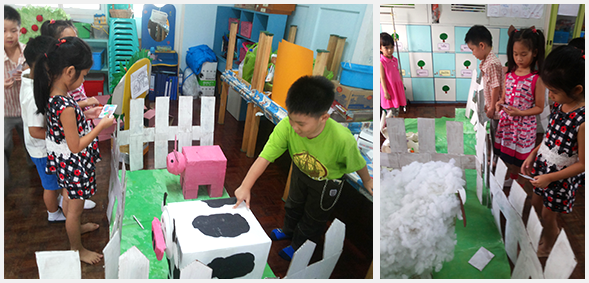We divide our English program equally between English and Thai study time and provide a variety of enjoyable learning experiences through hands-on activities. The children explore math and science concepts by conducting experiments and fun activities. In addition, the children enjoy creative art and music activities that encourage them to create and appreciate visual aesthetics that will enhance their social and emotional development as they grow up. The British teachers, our specialists, and the early childhood teachers work together in order to encourage the children’s English communication skills while developing their multiple intelligences.
We have applied the MI Theory to the school’s curriculum together with the Project Approach to provide opportunities for the children to study an interesting theme and discover and develop their varied competences.
Children are excellent explorers and discoverers; their natural curiosity encourages them to question and investigate. Through the Project’s learning steps, the children thrive within a wide variety of learning experiences, including searching for knowledge, conducting experiments, observing and collecting data, making conclusions, and reviewing their work. These learning experiences, both in the classroom and outside the classroom, encourage the children to be active participants in learning and developing their knowledge, skills, and competences that cultivate them to achieve a positive attitude towards learning and living in harmony with others. The following is an example of a typical project.
Farm Animals Project
Beginning the Project
The teacher first showed pictures that the children had brought from home and provided the opportunity for everyone to talk about his or her topic of interest. Each child then voted for a topic. Most of the class voted for the Farm Animals Project because they wanted to know “What kind of animals live on a farm?” “How do they live on the farm?” and “What are the most important features of a farm?”
Developing the Project
The children began their investigation by visiting a farm to find out what crops the farmer was growing, what animals live on the farm, and how they live. The children helped to look after the farm animals including some cows, ducks, chickens, and pigs and found out more information about their food and living conditions. We decided to create our own farm. The children collected the information and made their own farm by planting a vegetable garden in which we grew carrots, cabbages, onions, and peppers. The children also worked together to create their farm animals using arts and crafts in order to prepare for the presentation day of the Project.
Concluding the Project
The final stage involved concluding and presenting what we had learned to the children’s parents and friends. We had our own farm animals. We had learned how to feed and raise them and how the farm animals are important to farmers. The chickens provide eggs, the cows provide milk and the sheep provide wool. The children had a lot of fun learning about these farm animals. Some parents joined us on field trips and helped us find information and suitable materials to develop our farm.



